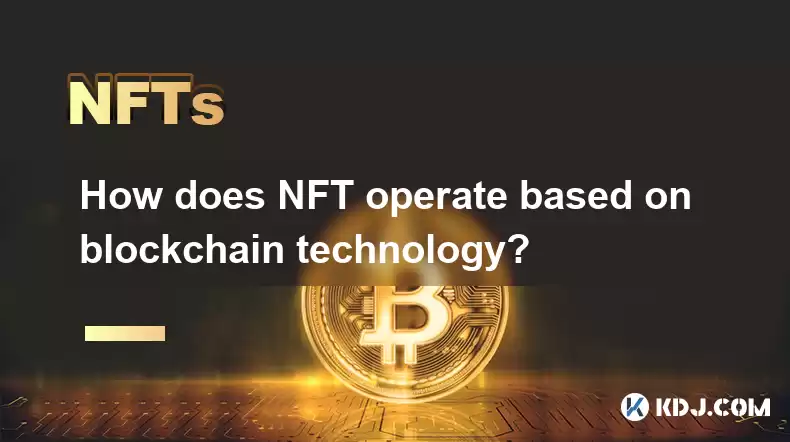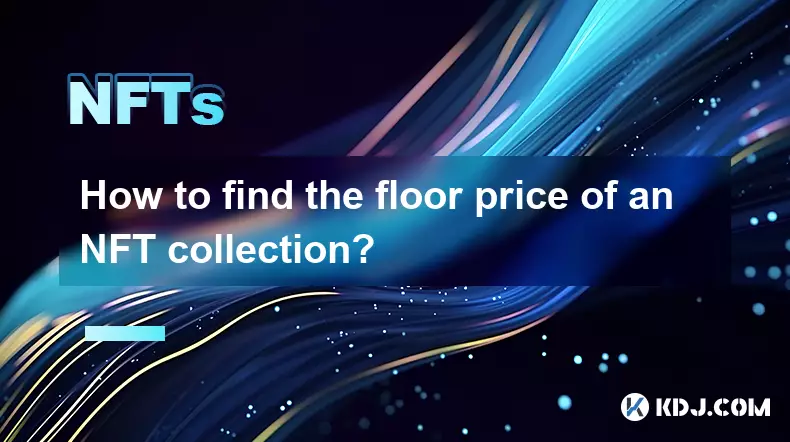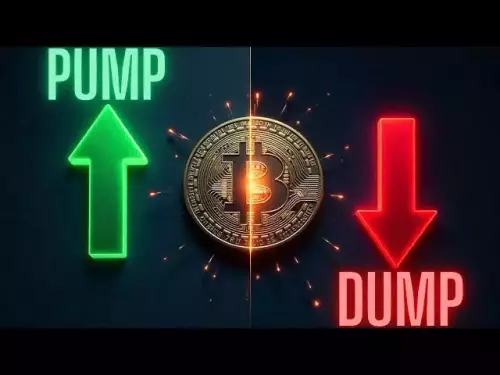-
 bitcoin
bitcoin $110415.485139 USD
-1.74% -
 ethereum
ethereum $3914.309383 USD
-1.58% -
 tether
tether $1.000075 USD
0.00% -
 bnb
bnb $1116.910315 USD
1.41% -
 xrp
xrp $2.562069 USD
-1.96% -
 solana
solana $193.888910 USD
-0.02% -
 usd-coin
usd-coin $0.999800 USD
-0.01% -
 dogecoin
dogecoin $0.192383 USD
-0.47% -
 tron
tron $0.296815 USD
0.66% -
 cardano
cardano $0.641286 USD
-0.18% -
 hyperliquid
hyperliquid $47.495653 USD
-0.35% -
 chainlink
chainlink $18.106533 USD
1.42% -
 bitcoin-cash
bitcoin-cash $561.296588 USD
0.00% -
 stellar
stellar $0.316591 USD
-0.21% -
 ethena-usde
ethena-usde $0.999227 USD
-0.01%
How does NFT operate based on blockchain technology?
NFTs, leveraging blockchain's immutable ledger, record ownership and authenticity via minting, listing, buying, and selling processes, each cryptographically verified by smart contracts automating ownership transfer.
Mar 14, 2025 at 12:20 am

How Does NFT Operate Based on Blockchain Technology?
Key Points:- NFTs leverage blockchain's immutable ledger to record ownership and authenticity.
- The process involves minting, listing, buying, and selling, each with unique cryptographic verification.
- Different blockchains offer varied functionalities and fees impacting NFT operations.
- Smart contracts automate the transfer of ownership and enforce specific conditions.
- Metadata associated with the NFT provides crucial information about the digital asset.
- Interoperability between different blockchains is a growing area of development for NFTs.
- Understanding Blockchain's Role:
Blockchain technology forms the bedrock of NFT functionality. At its core, a blockchain is a decentralized, distributed ledger that records transactions across multiple computers. This distributed nature makes it extremely difficult to alter or delete information once it's recorded, ensuring immutability and transparency. This immutability is crucial for NFTs because it guarantees the authenticity and provenance of the digital asset. Each transaction involving an NFT, from its creation (minting) to subsequent sales, is recorded as a block on the blockchain, creating a permanent and verifiable history. This history is publicly accessible (depending on the blockchain's design), allowing anyone to verify the ownership and transaction history of a specific NFT. This transparency eliminates the possibility of fraudulent duplication or claims of ownership, a significant advantage over traditional digital assets which are easily copied and distributed. The cryptographic hashing algorithm used in blockchain technology further enhances security by ensuring that any change to a block would be immediately detectable, preventing tampering. Different blockchains, such as Ethereum, Solana, Polygon, and Tezos, each have their unique characteristics in terms of transaction speed, fees, and scalability, influencing the choice of blockchain for NFT creation and trading. The selection of a particular blockchain often depends on factors like the desired level of security, transaction costs, and the specific functionalities offered by the platform. For example, Ethereum, while being the most established platform, can be expensive due to high gas fees, leading creators and buyers to explore alternative blockchains offering lower transaction costs. Understanding the specific characteristics of the underlying blockchain is critical to understanding how an NFT operates. The decentralized nature of the blockchain also contributes to the perceived value of NFTs, as ownership is not controlled by a central authority, reducing the risk of censorship or manipulation.
- The Minting Process:
Minting an NFT is the process of creating and registering it on a blockchain. This involves several steps. First, the creator prepares the digital asset – be it an image, video, audio file, or even a piece of virtual real estate – and then uploads it to a chosen blockchain's network. The asset is then associated with metadata, which contains crucial information such as the asset's name, description, and unique identifier. This metadata is essential as it provides context and value to the NFT. The creator then uses a specialized software or platform to generate a unique cryptographic token representing ownership of the asset. This token is linked to the asset's metadata on the blockchain. The minting process involves paying a transaction fee (often referred to as "gas" on the Ethereum network), which compensates the network's validators for processing and recording the transaction. The amount of this fee varies depending on the blockchain's network congestion and the complexity of the minting process. The minted NFT is then stored on the blockchain as a unique, non-fungible token, meaning it cannot be directly exchanged for another NFT at a fixed ratio like fungible tokens (e.g., Bitcoin or Ethereum). The minting process ensures that the NFT is unique and its ownership is verifiable on the blockchain. Different platforms offer varying minting options, with some offering simpler interfaces and automated processes while others provide more customization and control over the minting process. The choice of minting platform often depends on the creator's technical expertise and the specific requirements of the project.
- Listing and Selling NFTs:
Once an NFT is minted, it can be listed for sale on various NFT marketplaces. These marketplaces act as intermediaries, connecting buyers and sellers. Listing an NFT usually involves setting a price or accepting bids from potential buyers. The marketplace utilizes smart contracts to automate the transaction process. Smart contracts are self-executing contracts with the terms of the agreement written directly into code. When certain conditions are met (e.g., a buyer submits a payment), the smart contract automatically executes the transaction, transferring ownership of the NFT from the seller to the buyer. The transaction is recorded on the blockchain, providing a transparent and auditable record of the sale. The process is secure because it doesn't rely on intermediaries to manage the transfer of funds or ownership. The blockchain ensures the integrity of the transaction, preventing fraud or double-spending. Different marketplaces have different fees and functionalities, and creators often choose a platform based on factors like its popularity, ease of use, and the fees charged. Some marketplaces specialize in particular types of NFTs, while others cater to a broader range of digital assets. The choice of marketplace can significantly impact the visibility and reach of the NFT, influencing its potential market value. The listing and selling process is crucial for determining the market value of an NFT, as it allows for interaction between buyers and sellers, determining the price through market forces.
- Buying NFTs:
Buying an NFT typically involves navigating an NFT marketplace and selecting the desired NFT. After selecting the NFT, the buyer needs to connect a compatible cryptocurrency wallet to the marketplace. This wallet holds the cryptocurrency needed to purchase the NFT. The buyer then needs to review the details of the NFT, including its metadata, and confirm the purchase. Upon confirmation, the marketplace facilitates the transfer of cryptocurrency from the buyer's wallet to the seller's wallet. Simultaneously, ownership of the NFT is transferred from the seller to the buyer, facilitated by a smart contract. This entire transaction is recorded on the blockchain, creating an immutable record of the ownership transfer. The security of the transaction is ensured by the cryptographic security of the blockchain and the smart contract's automation. The buyer needs to understand the different fees associated with the transaction, including marketplace fees and gas fees (network transaction fees). The gas fees can vary depending on the blockchain's network congestion. Buyers should carefully review the details of the NFT before purchasing to ensure they understand what they are buying and its associated risks. The buying process is relatively straightforward but requires a basic understanding of cryptocurrency wallets and blockchain technology.
- Metadata and NFT Attributes:
Metadata associated with an NFT provides critical information about the digital asset. This metadata is stored off-chain, meaning it's not directly stored on the blockchain but linked to the NFT through a unique identifier. This metadata typically includes details like the asset's name, description, image file, and other relevant attributes. This information provides context and value to the NFT, differentiating it from other NFTs. The metadata can also include information about the creator, the date of creation, and any relevant provenance details. The accessibility and reliability of metadata are crucial factors in determining the value and authenticity of an NFT. The ability to verify the metadata's integrity is crucial for ensuring that the NFT is genuine and hasn't been tampered with. Changes to metadata after minting are possible, depending on the design of the NFT and its associated smart contract, but such changes are often recorded on the blockchain, maintaining transparency and accountability. The metadata's format and structure can vary, but common standards are emerging to ensure interoperability between different NFT platforms.
- Interoperability and Cross-Chain Functionality:
Interoperability between different blockchains is a significant challenge and a growing area of development for NFTs. Currently, NFTs are often confined to a single blockchain, limiting their transferability and usability across different platforms. Efforts are underway to create solutions that enable seamless transfer of NFTs between different blockchains. This cross-chain functionality would enhance the liquidity and accessibility of NFTs, enabling a more interconnected and efficient NFT ecosystem. Various technologies are being explored to achieve interoperability, including bridges, sidechains, and cross-chain protocols. These solutions aim to overcome the technical challenges associated with transferring data and assets between different blockchain networks while maintaining security and reliability. Increased interoperability would likely lead to a more robust and vibrant NFT market, fostering greater innovation and participation.
FAQs:Q: What is a blockchain and how does it relate to NFTs?A: A blockchain is a decentralized, distributed ledger that records transactions across multiple computers. Its immutable nature ensures the authenticity and provenance of NFTs, making it difficult to duplicate or alter ownership records. Each NFT transaction is recorded on the blockchain, creating a permanent and verifiable history.
Q: How are NFTs different from other digital assets?A: Unlike easily copied digital files, NFTs are unique and non-fungible tokens, representing ownership of a specific digital asset. This uniqueness is guaranteed by blockchain technology, making NFTs verifiable and preventing fraud.
Q: What are smart contracts and how do they work in the context of NFTs?A: Smart contracts are self-executing contracts with terms written in code. In the NFT world, they automate the transfer of ownership and enforce conditions, ensuring secure and transparent transactions without intermediaries.
Q: What are the risks associated with NFTs?A: Risks include volatility of the market, potential for scams and fraud, and the technical complexity of the underlying technology. Understanding the risks involved is crucial before investing in NFTs.
Q: What are the different types of NFTs?A: NFTs encompass a wide range of digital assets, including images, videos, audio, virtual real estate, and even collectibles. The variety of assets continues to grow as the NFT ecosystem evolves.
Q: How do I choose a blockchain for minting my NFT?A: The choice depends on factors like transaction fees, network speed, scalability, and the specific functionalities offered by the blockchain. Ethereum is widely used but can be expensive; alternatives like Solana and Polygon offer lower costs.
Q: What are gas fees and how do they affect NFT transactions?A: Gas fees are transaction fees paid to the blockchain network for processing transactions. They can vary significantly depending on network congestion, impacting the cost of minting and trading NFTs.
Q: What is metadata and why is it important for NFTs?A: Metadata is data about the NFT, including its name, description, and image. It provides context and value, making NFTs unique and verifiable. Its integrity is vital for ensuring the authenticity of the NFT.
Q: What is the future of NFTs?A: The future of NFTs is uncertain but holds potential for various applications, including digital art, gaming, collectibles, and even real-world assets. Continued development and adoption will shape its future trajectory.
Disclaimer:info@kdj.com
The information provided is not trading advice. kdj.com does not assume any responsibility for any investments made based on the information provided in this article. Cryptocurrencies are highly volatile and it is highly recommended that you invest with caution after thorough research!
If you believe that the content used on this website infringes your copyright, please contact us immediately (info@kdj.com) and we will delete it promptly.
- Essex Post Office, 5p Coins, and King Charles: A Royal Mint Revelation!
- 2025-10-23 10:30:16
- Waymo's Newark Airport AV Tests: Alphabet's AI Gamble Pays Off?
- 2025-10-23 10:30:16
- King Charles 5p Coins: A Royal Flush in Your Pocket?
- 2025-10-23 10:35:18
- Solana, Crypto Advisory, and Forward Industries: A New York Minute on the Future of Finance
- 2025-10-23 08:51:22
- MAGACOIN: Ethereum Whales Dive into the Hottest Presale of 2025
- 2025-10-23 08:51:22
- Kadena's End of the Road? KDA Token Plummets Amid Project Abandonment
- 2025-10-23 08:55:34
Related knowledge

How to start an NFT with zero coding skills?
Oct 30,2025 at 01:37am
Understanding the Basics of NFTs Without Technical Knowledge1. An NFT, or non-fungible token, is a unique digital asset verified using blockchain tech...

How to find the floor price of an NFT collection?
Oct 25,2025 at 10:01pm
Floor Price Basics in NFT Markets1. The floor price of an NFT collection refers to the lowest listed price for any item within that specific collectio...

What tools do you need to create your own NFT?
Oct 26,2025 at 07:18am
Essential Software for NFT Creation1. Digital wallet applications such as MetaMask or Trust Wallet are fundamental for storing and managing cryptocurr...

How to airdrop an NFT to your community?
Oct 30,2025 at 10:09am
Understanding the Basics of NFT Airdrops1. An NFT airdrop involves distributing non-fungible tokens directly to wallet addresses within a community. T...

How to flip an NFT for profit?
Oct 26,2025 at 03:54pm
Understanding NFT Flipping Mechanics1. NFT flipping involves purchasing a digital asset during its initial mint or shortly after launch and reselling ...

How to report NFT gains and losses on your taxes?
Oct 28,2025 at 02:19pm
Tax Implications of NFT Transactions1. Every time an NFT is sold, traded, or exchanged for another digital asset, it triggers a taxable event. The Int...

How to start an NFT with zero coding skills?
Oct 30,2025 at 01:37am
Understanding the Basics of NFTs Without Technical Knowledge1. An NFT, or non-fungible token, is a unique digital asset verified using blockchain tech...

How to find the floor price of an NFT collection?
Oct 25,2025 at 10:01pm
Floor Price Basics in NFT Markets1. The floor price of an NFT collection refers to the lowest listed price for any item within that specific collectio...

What tools do you need to create your own NFT?
Oct 26,2025 at 07:18am
Essential Software for NFT Creation1. Digital wallet applications such as MetaMask or Trust Wallet are fundamental for storing and managing cryptocurr...

How to airdrop an NFT to your community?
Oct 30,2025 at 10:09am
Understanding the Basics of NFT Airdrops1. An NFT airdrop involves distributing non-fungible tokens directly to wallet addresses within a community. T...

How to flip an NFT for profit?
Oct 26,2025 at 03:54pm
Understanding NFT Flipping Mechanics1. NFT flipping involves purchasing a digital asset during its initial mint or shortly after launch and reselling ...

How to report NFT gains and losses on your taxes?
Oct 28,2025 at 02:19pm
Tax Implications of NFT Transactions1. Every time an NFT is sold, traded, or exchanged for another digital asset, it triggers a taxable event. The Int...
See all articles









































































